
- Subject:
- Applied Science
- Biology
- Life Science
- Material Type:
- Module
- Author:
- OpenStax College
- Date Added:
- 07/18/2021


By the end of this section, you will be able to:Discuss the need for a comprehensive classification systemList the different levels of the taxonomic classification systemDescribe how systematics and taxonomy relate to phylogenyDiscuss the components and purpose of a phylogenetic tree

By the end of this section, you will be able to:Describe horizontal gene transferIllustrate how prokaryotes and eukaryotes transfer genes horizontallyIdentify the web and ring models of phylogenetic relationships and describe how they differ from the original phylogenetic tree concept

By the end of this section, you will be able to:Explain the different ways natural selection can shape populationsDescribe how these different forces can lead to different outcomes in terms of the population variation

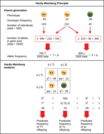
By the end of this section, you will be able to:Define population genetics and describe how population genetics is used in the study of the evolution of populationsDefine the Hardy-Weinberg principle and discuss its importance
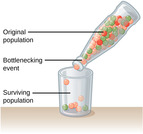
By the end of this section, you will be able to:Describe the different types of variation in a populationExplain why only heritable variation can be acted upon by natural selectionDescribe genetic drift and the bottleneck effectExplain how each evolutionary force can influence the allele frequencies of a population
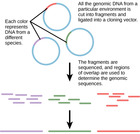
By the end of this section, you will be able to:Explain pharmacogenomicsDefine polygenic
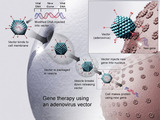
By the end of this section, you will be able to:Describe gel electrophoresisExplain molecular and reproductive cloningDescribe uses of biotechnology in medicine and agriculture
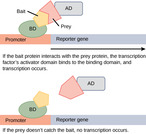
By the end of this section, you will be able to:Explain systems biologyDescribe a proteomeDefine protein signature

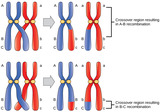
By the end of this section, you will be able to:Define genomicsDescribe genetic and physical mapsDescribe genomic mapping methods

By the end of this section, you will be able to:Describe three types of sequencingDefine whole-genome sequencing
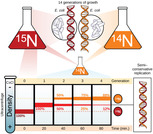
By the end of this section, you will be able to:Explain how the structure of DNA reveals the replication processDescribe the Meselson and Stahl experiments
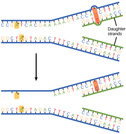
By the end of this section, you will be able to:Discuss the different types of mutations in DNAExplain DNA repair mechanisms

By the end of this section, you will be able to:Discuss the similarities and differences between DNA replication in eukaryotes and prokaryotesState the role of telomerase in DNA replication

By the end of this section, you will be able to:Explain the process of DNA replication in prokaryotesDiscuss the role of different enzymes and proteins in supporting this process

By the end of this section, you will be able to:Describe the structure of DNAExplain the Sanger method of DNA sequencingDiscuss the similarities and differences between eukaryotic and prokaryotic DNA

By the end of this section, you will be able to:Explain transformation of DNADescribe the key experiments that helped identify that DNA is the genetic materialState and explain Chargaff’s rules
